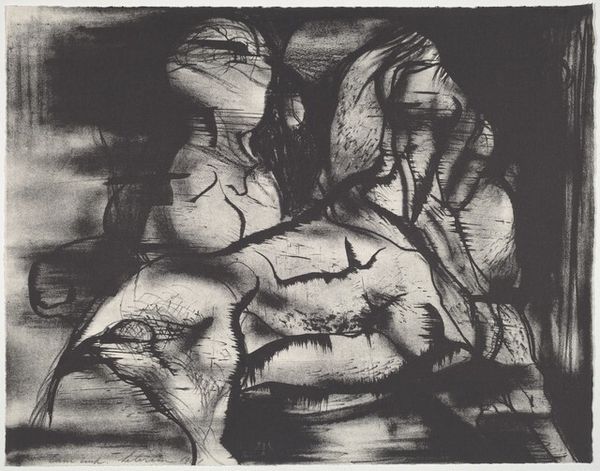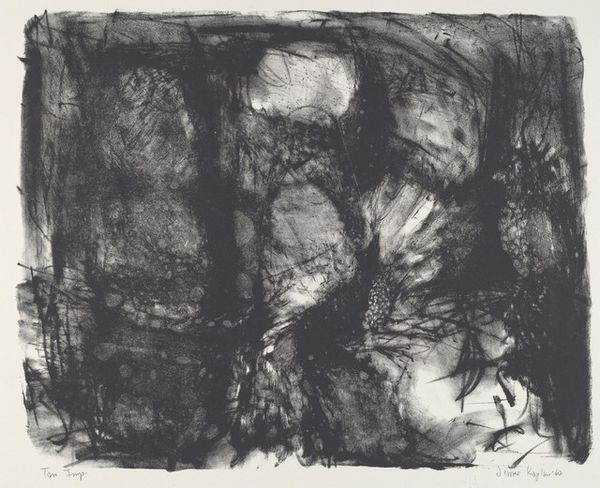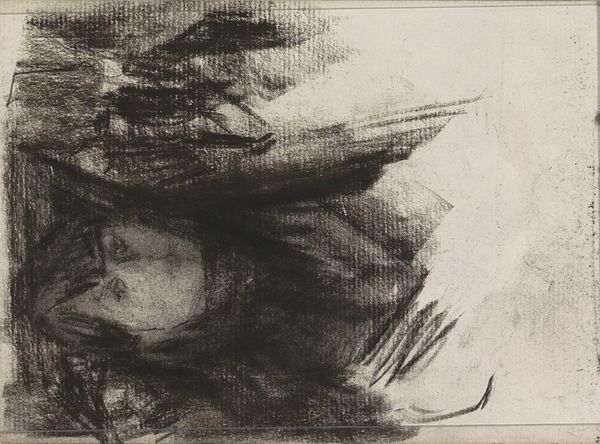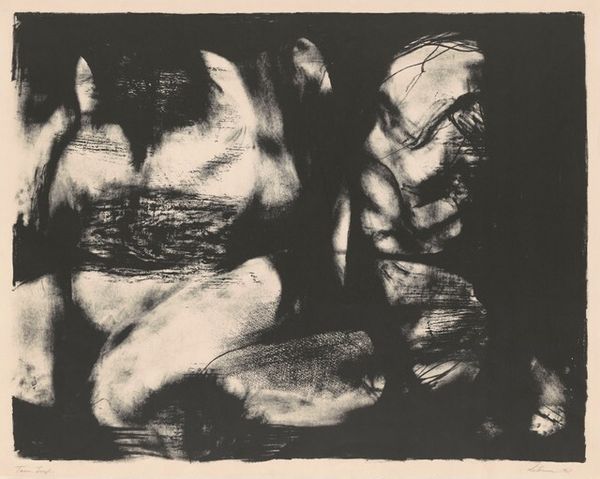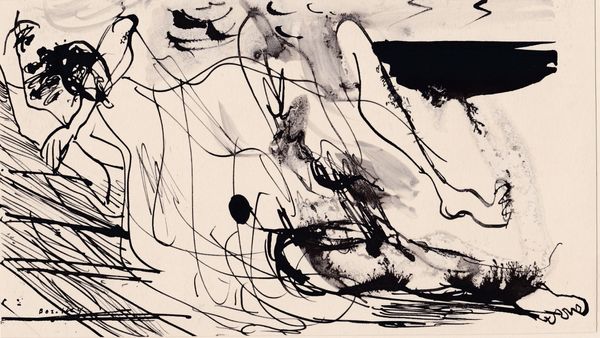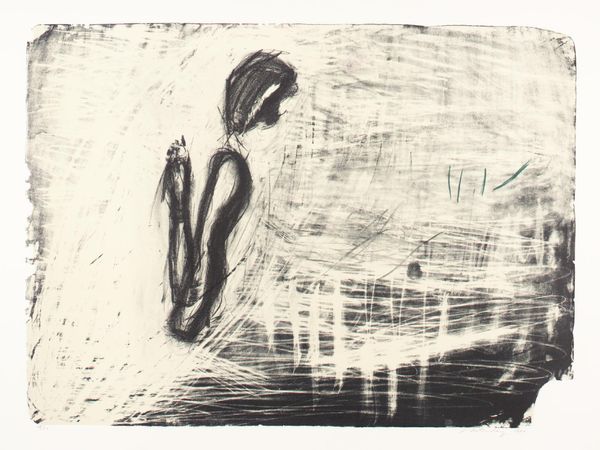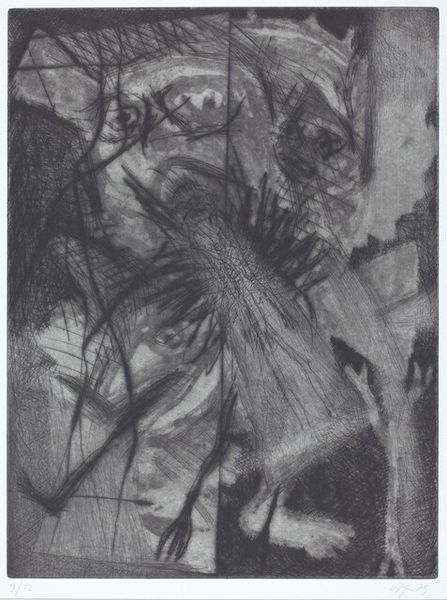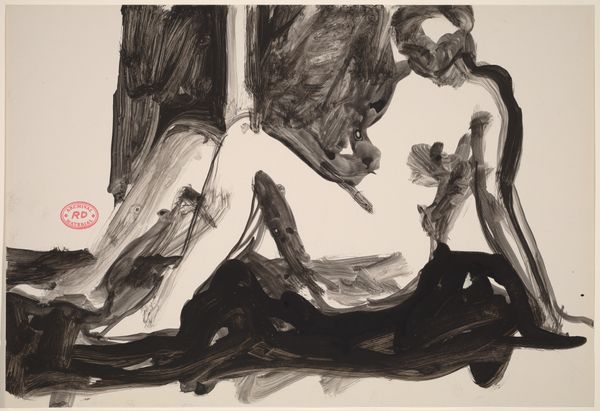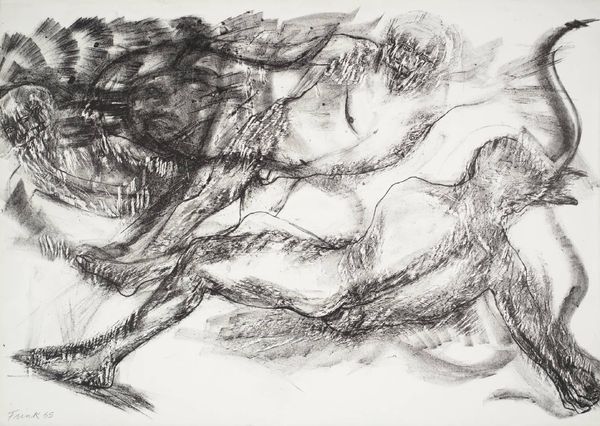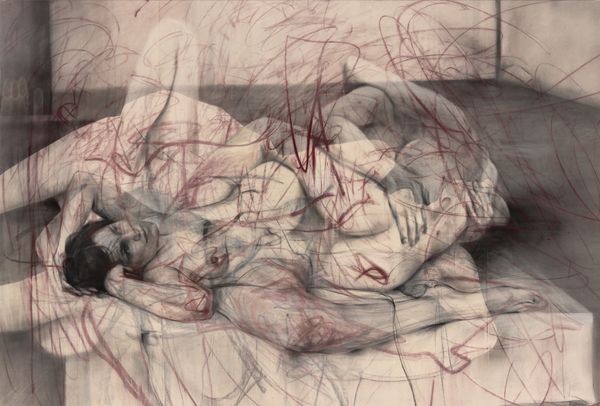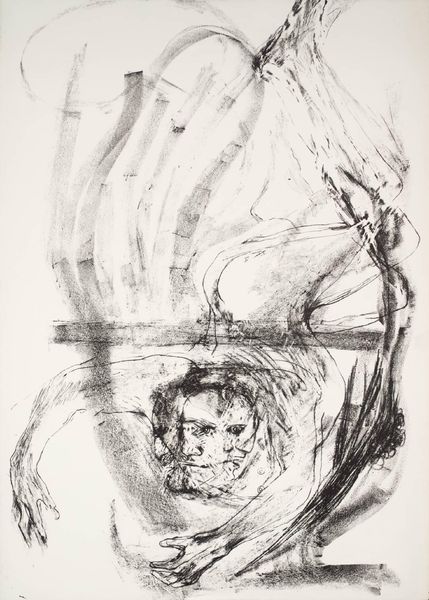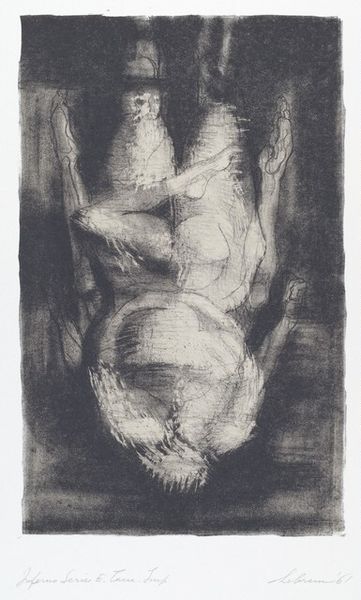
Copyright: National Gallery of Art: CC0 1.0
Curator: What a powerful, almost visceral work. I feel a sense of raw emotion emanating from this piece. Editor: Yes, that's a good way to start. This is an untitled charcoal print created by Rico Lebrun in 1961. The style immediately evokes expressionism, doesn't it? Note the stark contrasts, the abstracted figures. It feels very…gestural. Curator: Expressionism certainly informs it. But those faceless figures sitting closely together; that immediately suggests an existential tension. The negative space around their forms amplifies a sense of isolation, of alienation from one another even in shared space. This echoes postwar anxieties about identity and connection. Editor: I'm drawn to the texture, frankly. Lebrun’s application of charcoal—the varied pressures and smudging—creates this remarkable chiaroscuro effect. Notice the light reflecting on their bodies, and how that directs the eye. Compositionally, that balance between light and shadow keeps me visually engaged. Curator: The play of light and shadow also underscores the duality inherent in the human condition. Are they hiding? Are they waiting? Are they mourning? The absence of defined features allows viewers to project their own narratives, their own anxieties, onto these figures. Editor: Do you think it matters that Lebrun leaves the piece Untitled? In that the choice denies a more defined reading? I lean toward appreciating the emphasis on form, texture, the pure materiality of the medium, the composition rather than searching for a singular symbolic interpretation. Curator: The lack of title allows a broader scope of interpretations. Lebrun leaves open questions around what kind of trauma they bear. The universality of suffering, perhaps? These are enduring questions echoed across visual culture. Editor: Well, whether viewers are attracted to its composition, its technique, or its potential symbolism, I hope they will find that "Untitled" offers them a compelling moment for pause. Curator: Absolutely, whether to dwell on form or explore themes of shared human fragility.
Comments
No comments
Be the first to comment and join the conversation on the ultimate creative platform.
